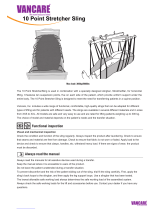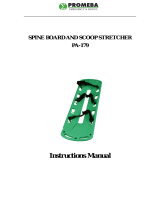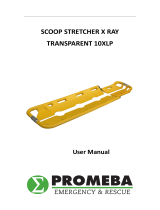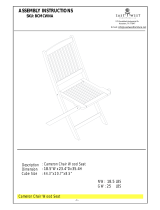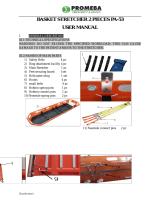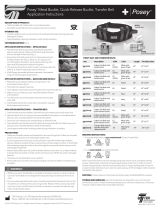YEAR
1613 14 15
Product name/
designation
Washing
instructions
Maximum
weight
Part no.
• Check the sling for wear and tear. It is important to check the fabric, the
edging, the seams and the lifting straps.
• Damaged lifting equipment must not be used.
• For washing instructions, please see the sling label.
The sling is designed for use with all Human Care's lifts and hanger bars. Visit
www.humancaregroup.com for information about equipment and products.
Combinations of equipment and products not recommended by Human Care
can put the patient's safety at risk. The use of these combinations is at the user's
own risk and liability.
Care and Maintenance
Using the product with other equipment
Is the patient incorrectly positioned in the sling?
• If the patient is at risk of sliding out, the sling is not correctly fitted.
• If the patient is at risk of sliding out, the sling may be too large.
• If the patient is unbalanced when lifted, the instructions on the individual
test log have not been followed or a new test needs to be carried out.
• If the sling is too small, this can be uncomfortable for the patient. The sling
can cut into the patient's flesh and/or his/her back may not have enough
support.
Note: It is important that the right sling is used for each patient
and that it is individually tested to ensure that it meets the
patient's needs.
Alternative connection method using leg support:
Note: An individual assessment of the patient's needs
must always be carried out before choosing an alternative
connection method.
1. Three point suspension: Attach the leg section lifting straps to the leg hooks
and the back section lifting straps to the lift bar.
2. Two-point suspension with crossed leg support: Thread the strap on one leg
section through the strap on the other leg section before attaching them to
the lift bar.
3. Two-point suspension with overlapping leg support: This method is suitable
for lifting patients with an amputated leg, for example. Extension straps can
be attached to the lifting straps to prevent the patient from leaning too far
back in the sitting position.
4. Two-point suspension with separate leg support: Put the patient's legs in
each leg section and attach the lifting straps to the lift bar. Note: This method
increases the risk of the patient sliding out of the sling.
Troubleshooting
Hints and tips
Label information
The label on the sling contains the following information.
Our slings are designed based on the fact that people are different and that we
all have our own wishes and desires. To make everyone happy and to make all
our clients feel as comfortable as possible sitting in our slings, most of them can
be used with 2, 3 or 4-point suspensions.
2-point suspension
Suitable for most lifting
situations providing a
good seating position.
2-point suspension is
available with fixed and
portable lifts.
3-point suspension
Offers an elongated
sitting position and
more even weight
distribution. The
3-point suspension
is suitable especially
for patients carrying
an increased risk of
pressure sores.
4-point suspension
A spacious sitting
position making it
suitable for larger
patients or when using
a stretcher. 4-point
suspension is available
with both fixed and
portable lifts.
Suspension Alternatives
Accessory Description Part no.
2-point hanger bar The 2-point hanger bar for HeliQ
stationary lift comes in 4 different
widths, 35 cm (13.8”), 45 cm (17.7”),
55 cm (21.7”) and 60 cm (23.6”).
35 cm: 55611
45 cm: 54043
55 cm: 55612
60 cm: 55613
4-point hanger bar 4-point hanger bar for HeliQ
stationary lift.
70800
4-point suspension 4-point suspension accessory (49 cm).
Enables 4-point lifting with the Altair
and Roomer S lifts. The suspension bar
is placed on the lift’s single leg hook.
55619
Hanger Bar Accessories - Human Care Lifts








